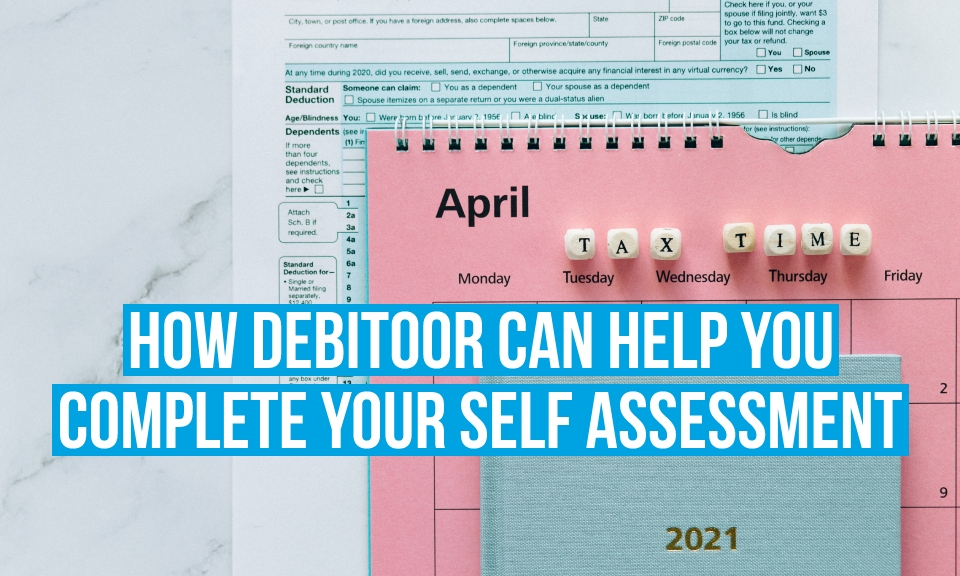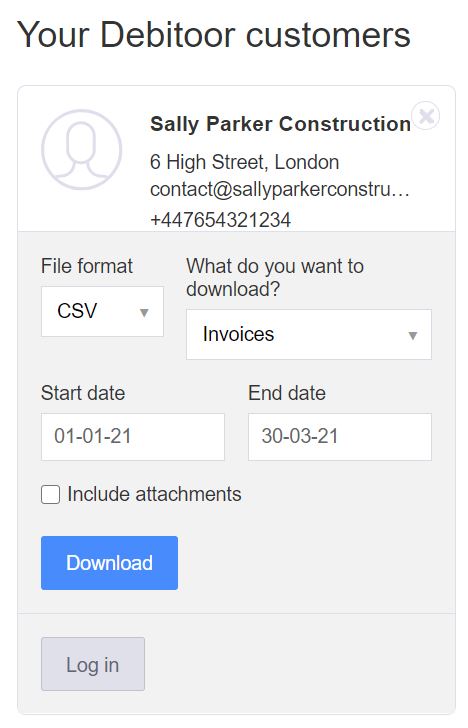Completing your Self Assessment tax return isn’t the most enjoyable part of running a business, but it needs to be done. Luckily, Debitoor makes it simple for you to find the data you need to make the process straightforward and effortless.

The past year has been a whirlwind and anything but normal. Most businesses have taken a hit from the pandemic, and many are even shutting their doors for good. This hasn’t been an easy year, but hopefully, we can help you make your taxes a little bit simpler.
If you use Debitoor as a freelancer or self-employed person, you can track your expenses, record your income, access accounting reports, export your data, and invite your accountant. This article explores the different ways that Debitoor invoicing software can help you complete your Self Assessment.
Gather your income and expenses
If you have recorded your income and expenses in Debitoor throughout the tax year, you should already be ready to grab the numbers and submit your return. However, we always recommend double-checking the numbers to make sure that you didn’t miss any important information.
Having thorough records of all of your income is important. Make sure that all of your invoices and other income have been recorded correctly.
You should also check that you have not missed any expenses, because these will be deducted from your profits, saving you money. Make sure that you have a receipt for every expense. If you do not have a receipt, you can still claim the expense, as long as it is reasonable, and you have detailed notes about the transaction.
With Debitoor, there are several ways that you can save expense receipts to your profile, so they will never be lost:
- Take a picture of the receipt from the Debitoor mobile app for automatic upload
- Send the receipt to your expense alias email for automatic upload
- Create the expense manually from the “Expenses” tab and upload a receipt
Download your reports
On one of the larger Debitoor plans, you have access to reports such as the balance sheet and profit and loss statement. If your business is registered for VAT, you will also have access to the VAT Report.
The profit and loss statement gives you a detailed breakdown of all of your recorded income and costs throughout the tax year. You can simply plug these numbers into your Self Assessment. If you are a sole trader, HMRC will just require your total income and total expenses throughout the tax year, unless you have any additional income to report.
Export your data
With any Debitoor plan, you can also export your data. You can use this to double-check your numbers, print a record for yourself, email it to your accountant, or find your total income and expenditure to complete your tax return.
To export your data, go to “Settings” > “Export Data” (bottom of the menu). Choose your export options: you can download Excel or CSV files to your computer of specific types of data from a time period of your choice. You can also tick the box “Include attachments” to also include the PDF files (for instance, invoices or credit notes).

You can download all of your data for your records, but if you are planning to send the data to your accountant, there is an easier way which is explained in the next section.
Invite your accountant
If your business is a bit more complex and you hire an accountant to check your records, then we’ve got you covered. On any Debitoor plan, you can invite your accountant to access your Debitoor profile and download your data.
When you invite your accountant, they log in through our accountant portal and create their own login credentials, so you don’t have to share your password with them. When they login as an accountant, they will immediately be able to export your data:

If they need to access your profile to make changes to your data, they can click the button “Log in” to view your profile as you see it. They will be able to make changes to everything except your Debitoor subscription and business details.
To invite your accountant to your Debitoor profile, click on “Contacts” > “Accountant” > “Invite”. Enter their email address and they will receive the invitation via email. You can remove an accountant’s access at any time from your profile.
Keeping your records
Unfortunately, it’s not all done and dusted once you submit your Self Assessment to HMRC. You will need to keep a record of your transactions for at least 6 years from the end of the tax year they relate to. HMRC may want to check your records and you can incur fines if any details are missing or incorrect.
With Debitoor, you can rest assured that your data is securely saved in the cloud and will not be lost. Even if you cancel your subscription, you will still have access to your previously created data. You can log in at any time to view or export the data from your profile.
Self Assessment deadlines for the 2020/2021 tax year
The majority of businesses wait until December or January to submit their Self Assessment, however, you can submit as early as April. Here are some important dates to keep in mind:

Last year, the Government permitted late filing of online submissions until February 28th, without any penalties. They may announce something similar this year due to the ongoing pandemic. Regardless, we recommend submitting your Self Assessment well before the stated deadlines.
Self Assessment checklist
If this is your first time submitting a Self Assessment, don’t worry, it’s not as difficult as you would imagine it to be. Below, we have provided a simple checklist to get you off to a great start:
- Get organised early
- Register for Self Assessment if you aren’t already
- Check your data to ensure nothing is missing/incorrect
- Make sure all (or most) expenses have an attachment or detailed notes
- Invite your accountant to access your profile and to check your data (optional)
- Use the profit & loss statement or the export data feature to find your total income and expenses in the tax year
- Submit your Self Assessment before the deadline
- Keep your records for at least 6 years
If you need any help with preparing your data from your Debitoor profile, don’t hesitate to reach out to us via the in-app chat or by sending an email to team@debitoor.com.
